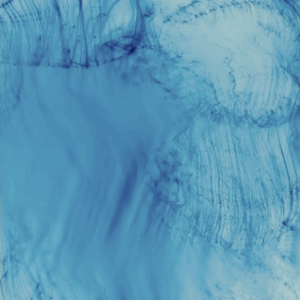JTF (just the facts): A total of 83 color and black and white photographs, unframed and affixed directly to white walls in gallery spaces on the first and second floor.
The works on view come from the following projects:
- Erotos: 10 gelatin silver prints, 1993, each 41×31 inches, in editions of 10
- Flower Cemetery: 24 c-prints, 2017, each 43×55 inches, in editions of 10
- Lovers Allure: 22 gelatin silver prints with acrylic paint, 2008, each 22×18 inches, unique
- Northern Sky: 27 gelatin silver prints, 2017, each 16×20 inches, in editions of 10
(Installation shots below.)
Comments/Context: In Nobuyoshi Araki’s long and prolific photographic career, there have always been cycles of overt expressive provocation and more inward looking and meditative aesthetic thinking. Especially when faced with personal loss (the death of his wife Yoko, his vision impairment in one eye, the death of his cat Chiro etc.), Araki has more directly followed threads of melancholy and despair, momentarily moving away from the explicit female nudes and rope-tied bondage setups that have marked him as an erotic agitator. This movement back and forth between the poles of life and death, with the desires, urges, and emotions of sex as a constant theme and connector, has informed the best examples of his work for more than half a century.
Two recent bodies of work, made in the last year, find Araki (now in his late 70s) settling once again into a darker and more pensive mood. Araki has long used flowers as a symbolic stand in for female sexuality, making up-close still lifes that turned pistils and petals into instruments of brash seduction. And while many of these same tantalizing leaves and blossoms are used in the dense bouquets of his new series Flower Cemetery, they now carry a heavier dose of emotional weight. A few still retain their perky powers of showy titillation, but many have begun to wither, their once ravishing forms now drooped and dried up. In among the flowers, Araki has deposited a selection of his signature plastic toys and dolls. Lizards, dinosaurs, snakes, and other reptilian beasts linger among the blooms, bringing a weary jolt of phallic monster masculinity to the proceedings, while dolls of varying types (both Japanese and Western) are separated from their bodies, the loosened heads dripped and splattered with paint like flowing blood. Put together as carefully controlled arrangements, the bouquets feel exhausted, the excessive energies and bold transgressions that once coursed through such objects now reduced to a more muted hum. Death has clearly cycled back to the front of Araki’s consciousness.
The images from the Northern Sky series have a related sense of reflective wistfulness. Paired images of clouds in the sky are divided by a single black bar, the diptychs ranging from split second variations to combinations that capture more elapsed time. Mostly, the views feel patient, Araki looking upward with attentive slowness, as if noticing the mystery of the passing clouds for the very first time. They memorialize the ephemerality of life, the compositions observed and then gone, ever changing and morphing into something new. Hung as a wall-filling grid, the pictures feel formally arranged and quietly out of control, their balance of darkness and light revealing an ominous slipping-away emptiness. While many photographers have been engrossed by the intricate patterns of clouds, Araki’s skyward views use the clouds as poignant emotional touchstones, the artist seeing his own tumultuous thoughts reflected in the endlessly drifting clouds above.
Perhaps to lighten the load of these two bodies of work and to add a bit of Araki’s more typical erotic provocation for those expecting it, two earlier projects offer more exposed skin. Lovers Allure goes back a decade, to the time when Araki was remaking his images with layers of expressive overpainting. Starting with black and white nudes taken in bathrooms, bedrooms, and tatami mat living rooms (the underlying subjects ranging in directness from demure and friendly to legs spread locked eyes frankness), Araki then reworked the pictures with bold splashes of primary colored acrylic paint. Sweeping gestural brushstrokes interrupt the images, with splotches, drips, and splatters adding further decoration. The overpainting adds a surge of manic energy to the otherwise subdued nudes, the overstimulated attention bursting forth into physical touching that frequently borders on frenzy. While the brash colors add aesthetic liveliness, the overall feeling is something akin to unrestrained male desire run amok.
The Erotos series goes back even further (to the early 1990s), to Araki looking more formally at the elemental shapes of the female body. In a grid of 10 high contrast black and white images, he alternates between sleek up close images of body parts (tongue/mouth, breast, scissored legs, anus) and still life images of various objects that seductively mimic curves, skin, and genitalia. Fleshy fruits and vegetables (sliced to expose their clefted innards), bumpy gourds, and even the rounded form of a wet spoon become stand ins for female sexuality, Araki’s eye seemingly seeing uninhibited seduction wherever he looked.
As a backdrop to the new bodies of work, these two older series deepen the contrast between Araki’s frisky urge-driven lasciviousness and the much more pensive and introspective mindset that has now taken hold. The primal forces of attraction that drove so much of his earlier work seem to be fading just a bit, allowing more nuanced emotions to come forth. In many ways, this is leading to a more complex and mystical Araki, where his images explore subtleties, contradictions, and changing moods rather than fundamental impulses.
Collector’s POV: The prints in this show are priced as follows, by project:
- Erotos: $15000 each
- Flower Cemetery: $18000 each
- Lovers Allure: $12000 each
- Northern Sky: $4000 each
Araki’s work (both photographic prints and photobooks) is routinely available in the secondary markets, running the gamut from large sets of images to single Polaroids. Recent prices have ranged between roughly $1000 and $191000.




























